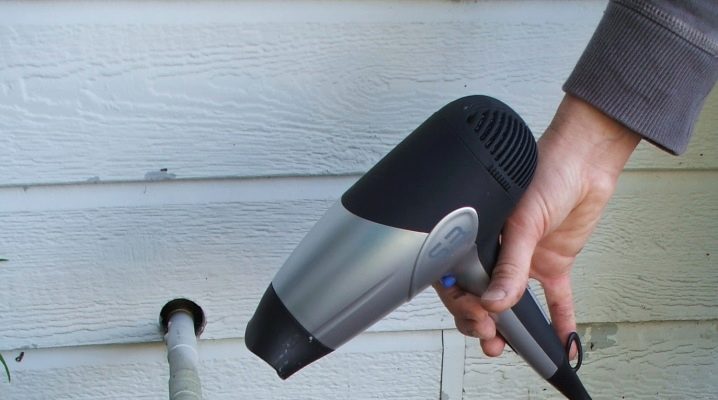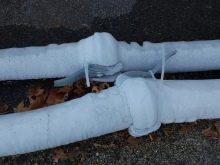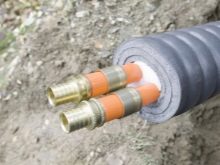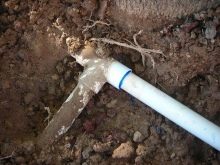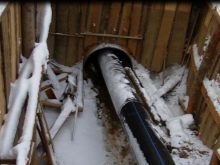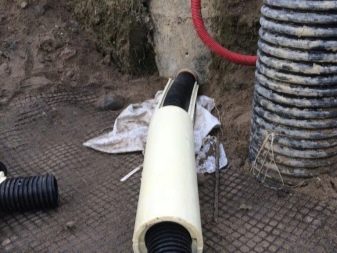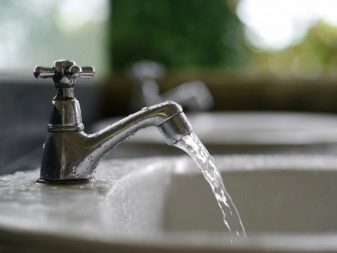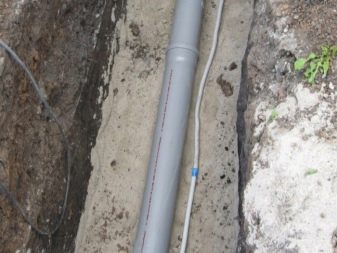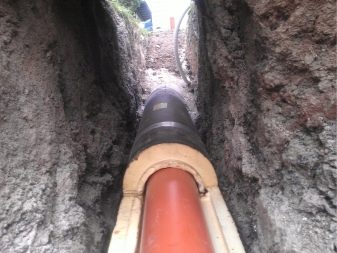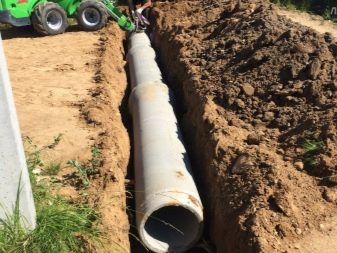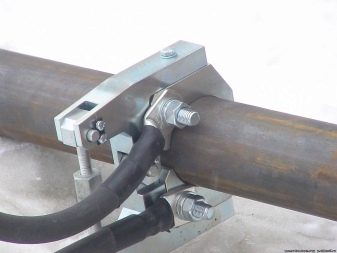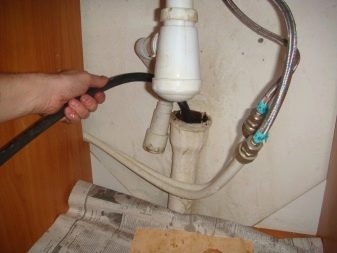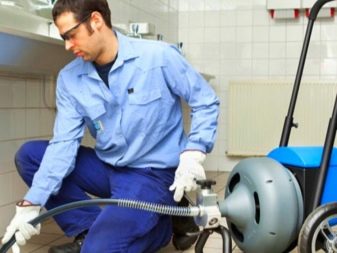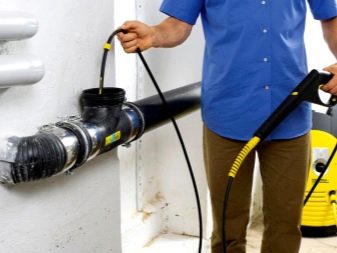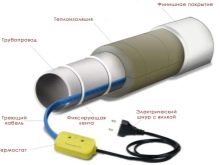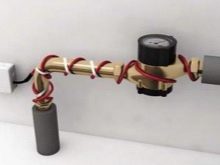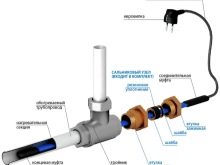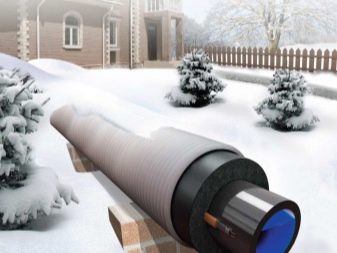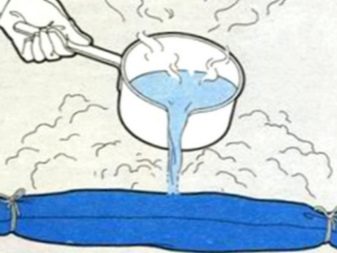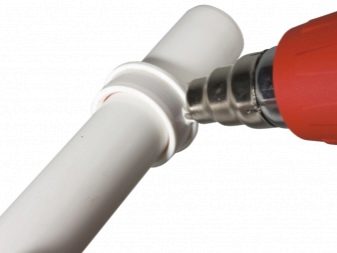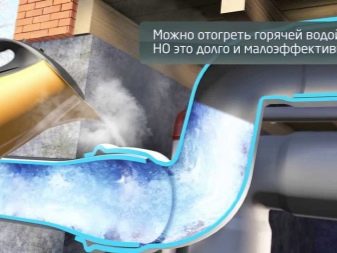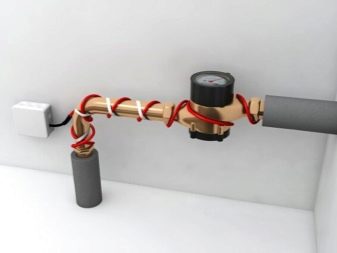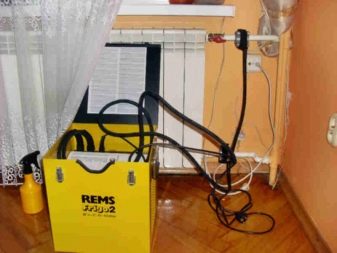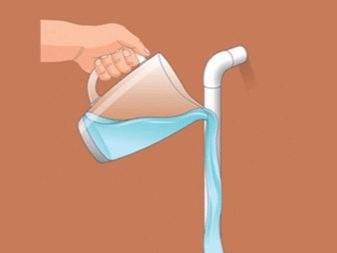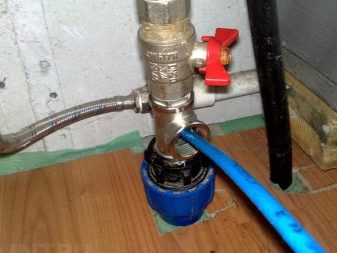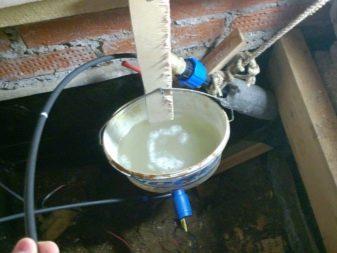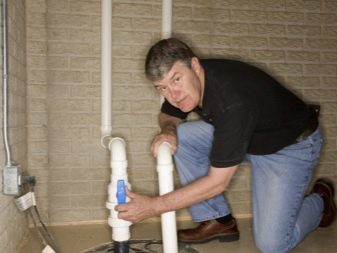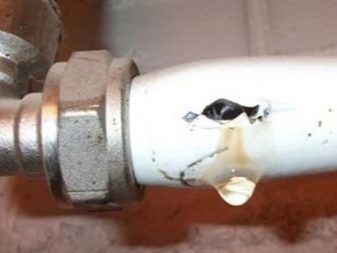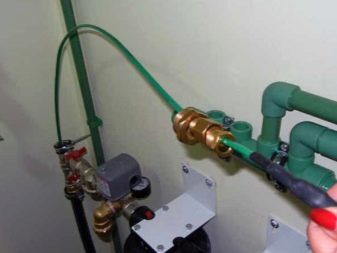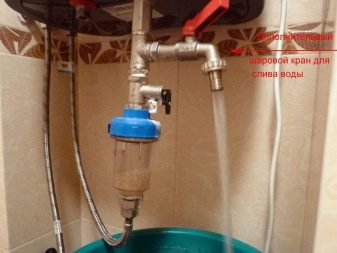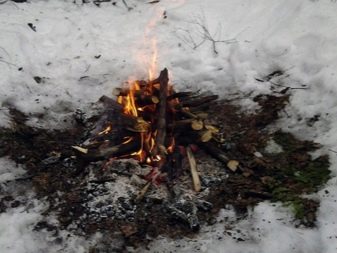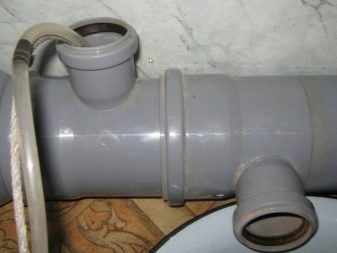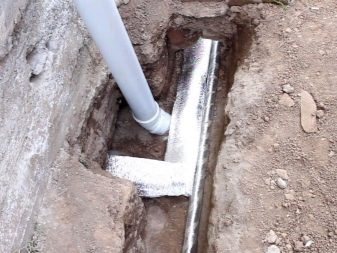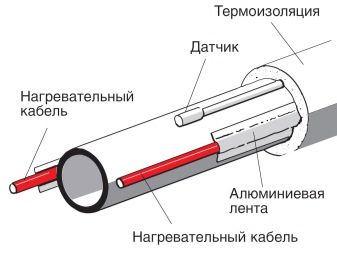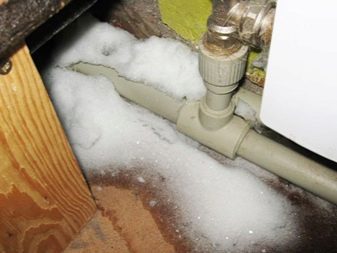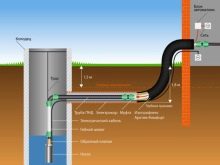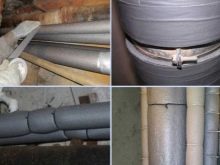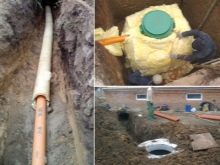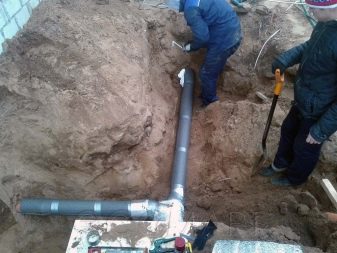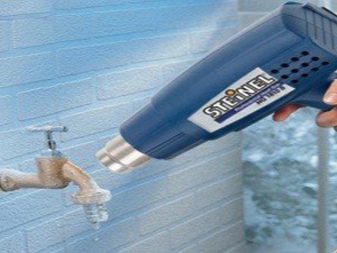How to quickly and properly defrost the pipe with water under the ground?
Practically in every private house there are drainpipes and sewage pipes through which water and drains are supplied and drained. Since this system is the property of the residents, in case of any breakdowns or problems, they often have to cope with everything on their own. One of the most pressing and unpleasant situations that one encounters is the freezing of water in the pipes in the winter period. It is very important to be able to properly defrost the pipes so that the ice during melting does not break them, violating the integrity of the entire water supply system.
Special features
For plumbing in a private house can be used both metal and plastic pipes, but that some that others are not protected from freezing in the winter, if the process of their installation was performed incorrectly.The main reason for the fact that water freezes in a pipe under the ground in a frost is the insufficient deepening of the water supply system. If the laying technology is performed correctly, then the whole system is located at the level where the frosts do not reach.
Due to the fact that the main pipelines have a large diameter, even in winter they do not freeze, because water flows all the time in them. Home systems are laid using pipes with a diameter of 20 mm or more - 32 mm. It is important to deepen such thin elements so that the frost does not get to them, however it is not always possible, therefore you need to know about the means by which you can warm the pipes to protect from the cold.
In that case, if all the recommendations were maintained, and the water still freezes, then in this case it is necessary to keep the system turned on all the time so that the water always flows through the pipes at least in a thin stream. This is quite expensive, given the cost of water, but it will not be necessary to spend time, effort and money on defrosting the entire system.
In order not to have to carry out work on the heating of pipes with water annually, it is important to prevent all possible problems at the stage of laying the entire network.
During installation, it is important to follow these rules:
- The depth of the trench should be greater than the level of soil freezing, which is typical for this region. There are relevant norms of SNiP, which will help to design a water supply system correctly.
- Choosing the location of pipes, it is important not to lay them next to the products of reinforced concrete, because their thermal conductivity is greater than that of the soil.
- If the laying is carried out under the foundation, then the pipes are isolated from reinforced concrete with the help of a large layer of thermal insulation, in which quality is best manifested mineral wool.
- When planning a plumbing system underground and over its surface, it is best to use pipes with a diameter of 50 mm, because thinner products freeze through much faster.
- When choosing material for pipes, it is worthwhile to give preference to polymeric products, which can increase the size by a few millimeters, which saves them from cracking during freezing and thawing.
- To accurately ensure a calm winter, it is necessary to lay a heating cable near the pipes, which will maintain the optimum temperature and prevent the system from freezing.
- If the house is used only in summer and is empty in winter, then it is important to drain all the water from the system so that there is nothing in the cold in the pipes. It will save them from freezing.
What is required?
If a pipe that supplies water or drains is frozen in a private house, you must first determine the place of the cork in order to eliminate it and not aggravate the situation. The simplest search option would be to use an iron cable, which is inserted into the water supply, which was previously blocked and immediately spun up at the junction of the structure. It is important to choose the longest cable, because the problem point may be both at the beginning of the system and at its end.
Once the plug has been detected, you can dig up the affected area of the pipeline. and take all necessary measures to defrost. If the construction is old and the pipes are metal, then the simplest way to warm the water inside is current, for which a welding machine is used. But for the pipeline from the PND, this method is no longer suitable. For them, the use of external funds brings little result, you need to apply a different approach.
The most effective, but expensive, is the use of a hydrodynamic machine, which can pump a jet of water at such a rate that ice and some other substances melt from such an impact.Only a professional can work with the device, because it is important to know the technology and follow the algorithm of work. If you need to quickly eliminate the problem, but you do not have the necessary skills and equipment, you can simply call the master, who will easily do everything necessary to restore the water supply.
Another method of heating a pipe includes a steam generator, the operation with which looks like this:
- fill the container with water in the amount of 2-3 liters;
- connect the heat-resistant sleeve to the place where the safety valve is located;
- lead the hose into the pipe to the place where the stopper was formed;
- Turn on the device and wait for the result.
Works should be carried out only in the correct sequence and it is better to have assistants with you, because after removing the hose from the pipe where there was ice, it will simply beat the fountain. This water must be collected in buckets, which must be prepared in advance. You can make more rags.
If there is no steam generator, it doesn’t matter, a boiler can be used to defrost pipes. To use this option, you need to prepare the wire, it must be copper, strong and have a cross section of 0.5 mm, and its length must be equal to the pipe.In addition, the necessary steel wire, the diameter of which is equal to 3 mm. Copper wires are stripped 60 cm, and the second - 1 cm from the cut. Separate turns are made on each wire so that there is no contact, otherwise a short circuit will occur.
Tape copper wires are screwed to the steel and it all plunges into the pipe. In such a simple way it turns out to build a homemade boiler. It must be connected to the network in order to heat the pipe, which will push the plug out of the heat. As soon as the problem is solved, the boiler is turned off and drawn out, and the pipe is closed. When the system starts up again, everything works as it should.
Pipe defrosting can be done by welding inverter. This is the wire that connects to the pipe at the site of icing and heats it. It is important to work correctly with the device and not to overheat it, giving a different voltage. After ten minutes of such exposure, the ice turns into liquid and the cork dissolves.
Heated water pipes in the event of a blockage of ice is one of the most effective option. For iron pipe suitable method of external exposure, and for plastic - internal.The means by which it is convenient to deal with icing can be any, and everyone chooses what he likes and can afford, the main thing is that there is a result, but it is best not to bring to such situations, properly running the water supply and warming it well.
How to warm up?
In order to warm the plastic pipe, in which water is frozen, You can use several techniques, including:
- The impact of hot water, for which the structure is wrapped with foam or rags and very hot water, almost boiling water, is poured in. This option is quite simple, but it is effective for pipes inside the house. In the case of underground ice jams, this method can pierce a barrier up to ten hours.
- Using hot air, for which you need to have a building hair dryer or a heating device. The place of icing is warmed up by any of the devices for two or more hours, it all depends on the degree of freezing of water inside. It is not difficult to do this kind of work, but it is important to carry out all the measures carefully, because pipes can be deformed due to the high temperature, which will further aggravate the problem.The effectiveness of this method is not too great, because with large energy and heat losses the real result does not come soon.
- Reheating using thermal conductivity. It is a pipe winding cable, which is used in the floor heating system. When everything is ready, the resulting structure is connected to electricity and begins to heat the pipe itself. The workflow takes about three hours and allows you to alert only those pipes that are above the ground and in the house. Wires for floor heating are quite expensive, so to buy them in order to defrost the system once is unprofitable due to the high cost of living.
- The process of heating the pipes inside allows you to effectively solve the problem. For work, it is important to have access to the problem area, so that hot water can be poured into it using a special device that pushes fluid under high pressure, but you can also use an apparatus that looks like a boiler. Work goes slowly, the problem is completely solved in at least three days. It is forbidden to use this option for those segments where the pipes run vertically.The system to ensure operability must be in a horizontal position.
If you have to deal with plastic pipes, then defrosting them can be handled with your own hands, the main thing is to know what to do. For those pipelines that are located underground and the system is a network of turns and various bends, then all the previously listed options will not be able to help. The best option in this case would be a welding machine that needs to be connected to different ends of the pipes and turned on. If there is no suitable equipment, you can simply use hot water.
To make an effective tool for defrosting pipes, you need:
- find a rigid hose or a plastic pipe of small diameter;
- put a hose or pipe into the water supply and move it until it hits the ice;
- pour hot water or brine;
- for the water that will be formed from the ice plug, you need to put the container;
- as soon as the problem area is completely eliminated, it is necessary to turn on the hot water in the tap and thoroughly clean the system.
If metal-plastic structures were laid, then to defrost them you need to do a number of actions:
- Find a problem place, for which it is enough just to probe all the pipes. The freezing point will be much colder than the rest of the surface.
- The place of icing is wrapped up with the help of rags and all water supply taps are opened. Care must be taken to ensure the availability of hot water.
- The surface of the pipe is being processed gradually, cold water is used immediately, because it is hot. This is important in order not to damage the structure by a sharp jump in temperature.
- The melted water will begin to exit the pipes through the valves that were previously opened.
If there is no desire to carry out such operations annually, or even several times over the winter, it is worthwhile to quickly organize the weatherization of the site, which is particularly prone to freezing.
In cases where water freezing has occurred in areas inaccessible to humans, for example, under the foundation, then It is possible to deal with problem situations with the help of a number of measures:
- You need to purchase a barrel, a pump and a hose with oxygen. In the barrel you need to get hot water, the temperature of which will constantly grow.
- Insert the hose into the pipe and push it in until it hits the ice.
- It is necessary to open the tap and connect it to the hose, which is put into the barrel. If not, you can use a simple bucket.
- There is a start of the pump, through which hot water is supplied to the pipes for defrosting ice. From time to time the pump must be turned off to drain the formed water.
- As soon as the problem goes away, the hose must be removed and the water in the pipeline must be drained.
If the problem has affected the sewage system, then you can deal with it if you know how. Usually, sewage pipes do not freeze, because the water used is usually warmer, but with very cold temperatures it is possible.
To combat the traffic jams in the sewer can:
- Make a fire in the place where the collector. This option will be effective if the pipes are not far from the surface. The flame must be maintained for as long as possible in order to be able to heat the ground, and with it the sewage system.
- Use of table salt. A self-made, but very effective method is to put a large amount of a solution of concentrated salt in the sewage pipes, which will not freeze even in severe frost,and salt in contact with ice will dissolve it.
- You can use the electric cable, which lead up to the moment of icing through the toilet or revision hatch. Once the device is installed, turn it on.
- You can use the viewing hatch of a septic tank, where a hose is fed through the outlet for watering garden plants. It needs to be advanced to the place where ice is supposed to exist, then pour hot water from the aqueduct inside. You need to continue the process until the ice is completely gone.
In case of severe frosts in the winter and freezing of water in the pipes, you need to know how to cope with the situation. First of all, it is important to understand what material the pipes consist with which to work, how deeply they are laid and a number of other nuances, after which it will be much easier to choose the right option for dealing with ice jams.
Tips
In the event that problems with pipes, namely freezing in the winter, were discovered in a private house, you need to know some secrets in order to prevent such phenomena or to skillfully deal with them.
In order to prevent such phenomena, should:
- To install water and sewage pipes lower than the frost fades, and this is at least a depth of 120-140 cm. In case of problems with such deepening, the pipes are carefully insulated.
- Using pipes that are large enough in diameter, one can avoid their rapid freezing. The best size will be 50 mm.
- In order to avoid stagnation of water in the system when it is set up, it is necessary to provide an angle of inclination so that it quickly drains into the source.
- When laying pipes, it is necessary to stay away from the beams, the foundation, the thermal conductivity of which is higher than that of the ground, which is dangerous for pipes. Whenever possible it is worth making good isolation if there is reinforced concrete nearby.
- If the water supply system is located in a non-residential area where there is no heating, then it is important to warm it up additionally, for which mineral wool, glass wool and foam can be used.
- Living in regions with very harsh winters, when arranging the water supply, it is better to lay a cable next to it that will heat the pipes. Its advantage is that it determines the moment when it is necessary to switch on and off, but there are also manual models.
- Choosing a pipe, you should give preference to polyethylene rather than polypropylene, because they well maintain the process of freezing and defrosting ice.
There are a number of tips to help protect the system from freezing or deal with it more effectively:
- To protect the pipeline from freezing, it is worth exploring the temperature regime of the region and lower the construction a meter below the mark where the frost usually drops. This will allow you to forget about any problems with water in the cold season.
- If the pipes freeze at the intersection of the ground with open space, then a regular hairdryer can help, and in particularly difficult cases - a building one.
- If problems with pipes arise annually, then you should set yourself a goal to redo the system, than to constantly deal with the consequences.
- When freezing is very serious or difficult to solve on your own, it is best to call a professional who will remove the ice plug without any problems.
- If you manage to independently fight with ice, but you have to constantly clean the system by running water, you can collect it in special containers and then use it for household needs.
Those who still use metal plumbing or sewage pipes can deal with ice jams with the help of terminals that are attached to the problem area, after which the flow of current begins, which warms the pipe and the ice inside starts to melt.If the freezing occurred in the pipe leading directly from the toilet bowl, then one option would be to heat the water directly in the plumbing, for which you will need heating elements or a boiler. Metal pipes are heated with a blowtorch, for which you need to make a trench at the location of the sewer and a lamp to heat the pipe, going upwards from below. Work is being carried out from the side of the sump or septic tank, if any, to allow unobstructed release of water after melting.
With any problem you can cope, most importantly, to know exactly how this can be done and to approach the process correctly. It is through knowledge that one can avoid common mistakes, which lead to the fact that in the winter time the water in the pipes freezes, and this, in turn, leads to the risk of structural failure and repair of the entire system. In addition, water or drains can get under a residential building, which will cause flooding of the foundation, dampness in the house, cracks in the walls, the appearance of an unpleasant smell and many other problems that could have been avoided.
To defrost the water pipe, see the video below.
